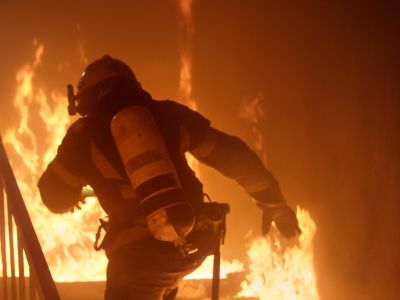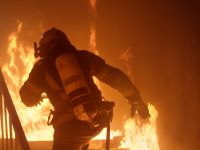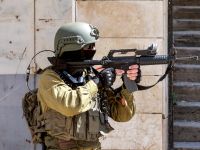Ever since World War II, the name Katyusha (Russian for “Little Kate”) has been used to describe a large family of Russian artillery rockets. First introduced during the great conflict, Russian Katyushas, usually fired in large salvos, caused great devastation to the opposing German forces.
The variant of the Katyusha family most often used by the Hizbollah in Lebanon is the BM-21 version, also known as the Grad system. First introduced in 1964, it has since become one of the most widely used artillery rockets in the world – great numbers of Katyushas were fired by both sides in the 1973 October war and in the prolonged Iran Iraq war, to name just a few instances. The Katyusha is also produced by a variety of countries, including Russia, the Czech Republic, China, North Korea, Egypt and Iran.
The Katyusha is an unguided rocket – it is aimed by pointing the launcher to the correct direction and angle. Once the rocket is launched there is no way of correcting its aim. Because of this, the Katyusha is an inaccurate weapon, best suited for use against large targets (such as entire towns or concentrations of troops). Because of its inaccuracy, the Katyusha is also usually fired in salvos of several rockets at a time, to increase the hits on the target.
The Katyusha has a range of some 12.5-Miles (Over 20 Kilometers). It carries a warhead of 40 Pounds (18 Kilograms) of high explosives, surrounded by a steel fragmentation casing that breaks up into hundreds of lethal pieces of shrapnel upon explosion. The rocket is of 122mm caliber and about 9 feet in length (2.75 meters).
Hizbollah has a number of multiple launchers mounted on trucks, and these can fire several rockets in salvo. However, Hizbollah guerrillas prefer to fire the Katyushas individually, as this makes it nearly impossible for Israeli troops to detect the source of the Katyusha and fire at them.
In a typical Hizbollah operation, the guerrillas march for a considerable distance on foot, carrying the rocket and launcher with them by hand. At a pre-selected location, the guerrillas set up the launcher, aim it in the direction of the Israeli target, and fire the rocket. Once the rocket is fired, the guerillas quickly leave the area. The illustrations accompanying this article show Hizbollah guerillas crossing a stream in Lebanon while carrying a Katyusha rocket to its firing position, and Hizbollah guerillas in a remote forest clearing aiming the Katyusha launcher at Israeli targets prior to firing.
The threat of Katyushas fired into Israeli territory from Lebanon has long been a source of nightmares for the Israeli leadership, and was a precursor of the 1982 invasion of Lebanon, which followed Katyusha attacks by PLO fighters from inside the Lebanon. Fear of Katyusha attacks was also a major factor in Israel’s seizure of its self-declared “security zone” in Southern Lebanon, which was only abandoned in May 2000. Because of its fear of these rockets, Israel (in cooperation with the USA) has in recent years spent billions of dollars on a “Star Wars” type project, in which a laser is to be used to destroy Katyusha rockets in flight.
Because they can be fired from a great distance beyond the international border, and because they can cause massive damage to both military and civilian targets, Hizbollah’s Katyushas are seen by the Israelis as a very serious and deadly threat. (www.albawaba.com)









